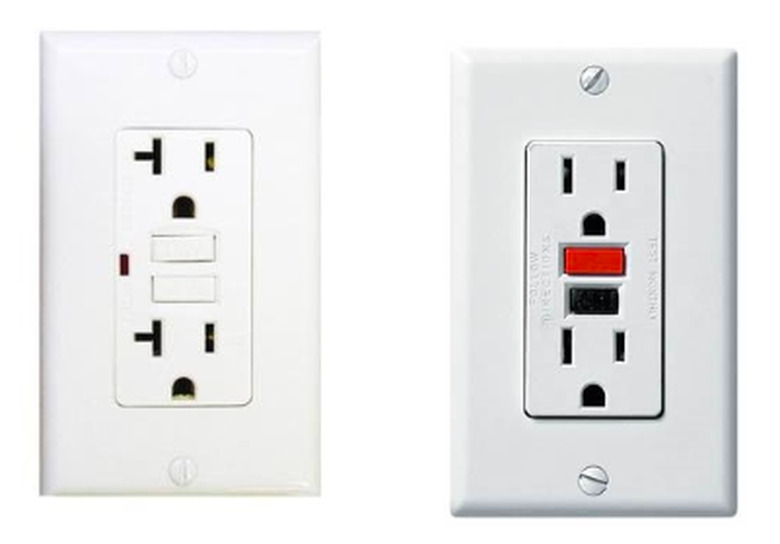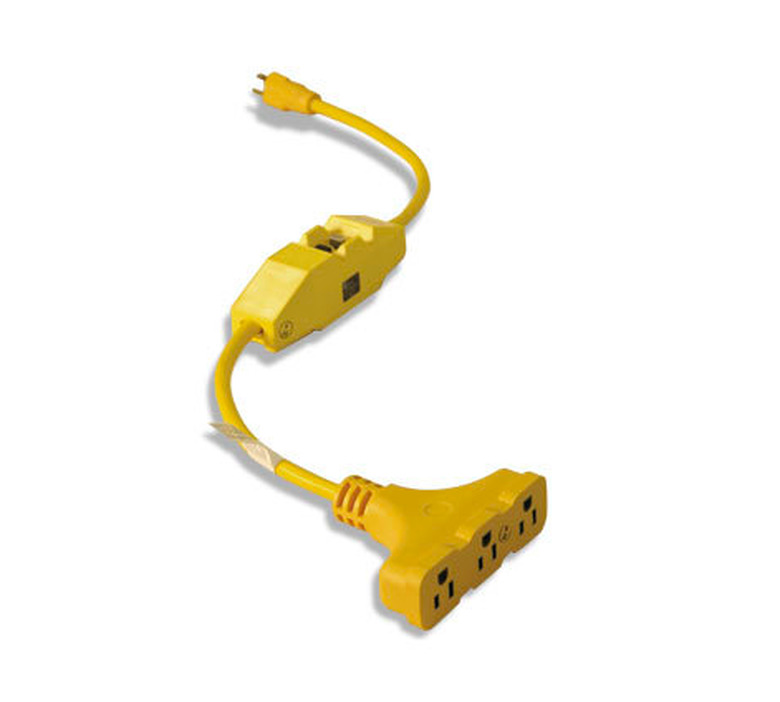What Is A GFCI?
When residential electricity was in its infancy during the early twentieth century, circuits did not include a ground path, and shocks were common. You could get a shock just by turning on a light switch or touching an appliance. To remedy this, the National Electrical Code (NEC) began requiring grounding in 1947, first for laundry room outlets, and by 1962 for all branch circuits in a building. The physics are complicated, but grounding a circuit basically gives electricity a path to earth so it won't find that path by passing through a person's body or building materials that are flammable.
A grounding path reduces the likelihood of shocks, but it isn't uncommon for that path to be compromised by worn insulation or a loose connection in the system. When that happens, a person can still get a serious and even fatal shock. The most notorious example is a person getting shocked while unwittingly handling an uninsulated tool or appliance, such as a drill or hair dryer, while standing in water or on wet ground.
The primary purpose of a GFCI is to prevent these kinds of accidents when the grounding path doesn't function correctly. GFCI is an acronym that stands for ground fault circuit interrupter, and it's sometimes shortened to GFI, or ground fault interrupter. It's basically a fast-acting circuit breaker that stops the flow of electricity before anyone gets hurt. A GFCI isn't primarily intended to prevent fires—that's the job of an AFCI, or arc fault circuit interrupter—but it can also do that by eliminating the possibility of overheated wires that occur during a ground fault.
How Does a GFCI Work?
How Does a GFCI Work?
A GFCI device contains solid-state circuitry that monitors the amount of current going to the load from the device and the amount returning. These measurements should always be the same. If the electric signal returning to the device from the load is different than the signal going to the load, the GFCI trips, opening the circuit and stopping the flow of electricity. GFCIs are designed to respond to very small signal differences— 4 to 5 mA (milliamps)—and they respond quickly, usually within less than 1/10 second.
Types of GFCI Devices
Types of GFCI Devices
GFCIs first started to appear as electrical receptacles in 1971, and receptacles are still the most common type of GFCI device. A GFCI receptacle is easy to distinguish from a conventional one because it has two buttons arranged vertically on the front face. The top button, which may or may not be red, is the button that resets the internal breaker after it trips, and the bottom button, which may be black, is a test button. When you push it in, the breaker trips.
GFCI circuit breakers are another form of ground fault protection device. A GFCI breaker differs from a conventional one by having a white wire that must be attached to the neutral bus in the panel to ensure that the breaker can monitor the return current through the circuit. A GFCI breaker protects an entire circuit and costs about as much as three GFCI receptacles. But it will protect the entire circuit against ground faults.
When you need instant GFCI protection, you have two temporary options. One is a portable GFCI receptacle that plugs into a conventional receptacle and provides ground fault protection for any device that you plug into it. Like a permanent GFCI receptacle, a portable one has two buttons arranged vertically for resetting the breaker and testing it. The other temporary option is a corded GFCI receptacle. This also plugs into a conventional outlet, and it looks like a regular extension cord except for the in-built GFCI module with its familiar reset and test buttons. Anything you plug into a GFCI cord has ground fault protection. If you need multiple outlets, you can buy a GFCI power box.
Where Does the NEC Require GFCI Outlets?
Where Does the NEC Require GFCI Outlets?
The NEC first started requiring GFCI receptacles in 1971, but only in pool areas. It quickly extended the requirement to all outdoor receptacles, then to construction sites and bathrooms and gradually to other areas in a building. The 2017 edition of the NEC (an official document that is revised every three years) requires GFCIs in locations where water is likely to be present. These include:
- Bathrooms
- Garages
- Outdoors
- Unfinished basements
- Crawl spaces
- Kitchens
- Laundry rooms
- Pools and spa areas
Any circuits that are protected by a GFCI breaker do not require separate GFCI receptacles. Because GFCI protection is required in so many locations, installing a GFCI breaker is often a cost-effective alternative to installing individual receptacles.
GFCI breakers and receptacles have to be reset when they trip, so they must be accessible. The code does not permit installing a GFCI receptacle behind an obstacle, like a couch or a bookcase.
Dual GFCI/ AFCI Devices for Total Protection
Dual GFCI/ AFCI Devices for Total Protection
A GFCI device guards against a current surge that could potentially electrocute someone, while an AFCI guards against electrical arcing that could start a fire. Both types of protection are mandated by the code, which requires AFCIs in even more locations than the GFCI requirements. Because AFCIs and GFCIs are looking for different things, they work in different ways. An AFCI doesn't compare incoming and outgoing current. Instead, it monitors current strength and waveform characteristics, which help it recognize when an anomaly, such as arcing or sparking, occurs.
Since both GFCIs and AFCIs provide critical protection and are required by the NEC, manufacturers have started incorporating both functions in receptacles, portable power outlets, and circuit breakers. If you don't install dual function breakers or outlets, you can still get both types of protection by installing AFCI breakers and GFCI receptacles in all the places the NEC requires them. However, the easiest and most effective—although not necessarily the least expensive—strategy is to install combination GFCI/AFCI breakers for all circuits that require either GFCI or AFCI protection.




